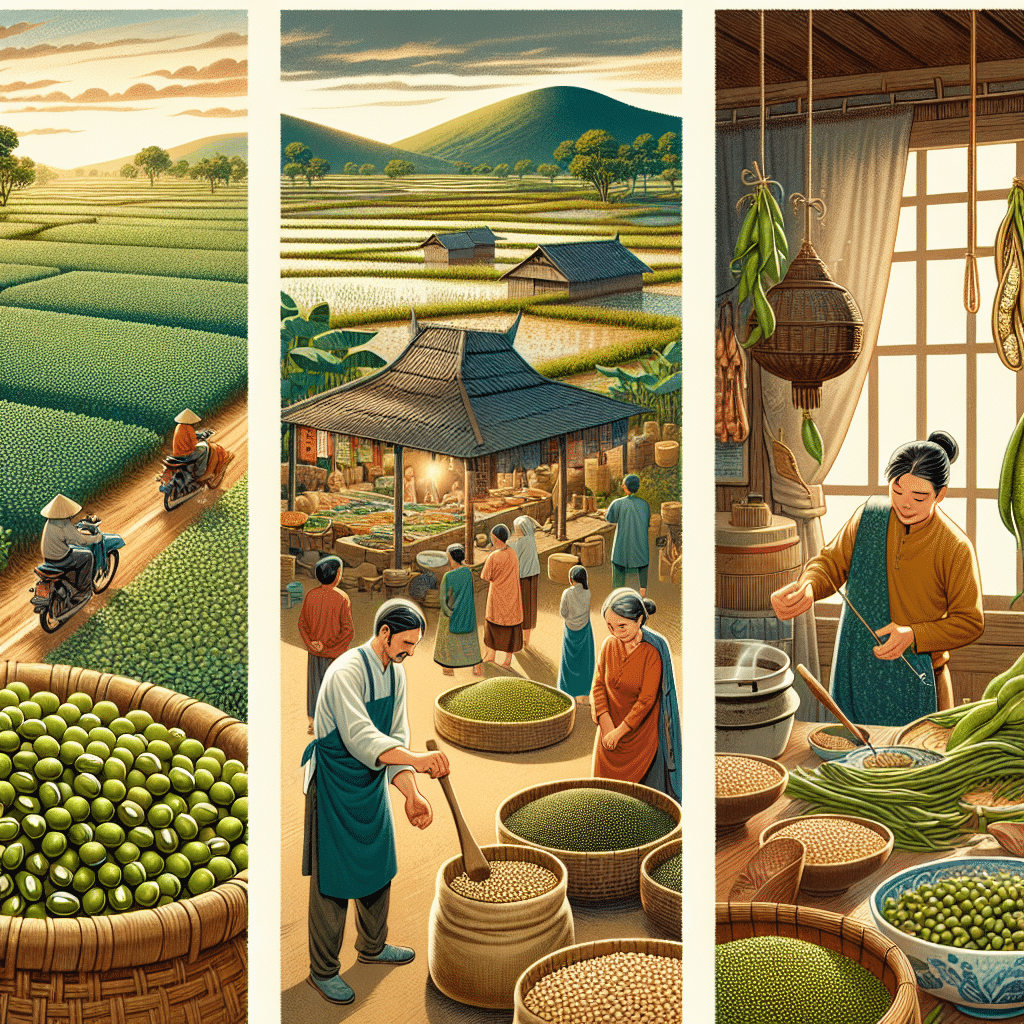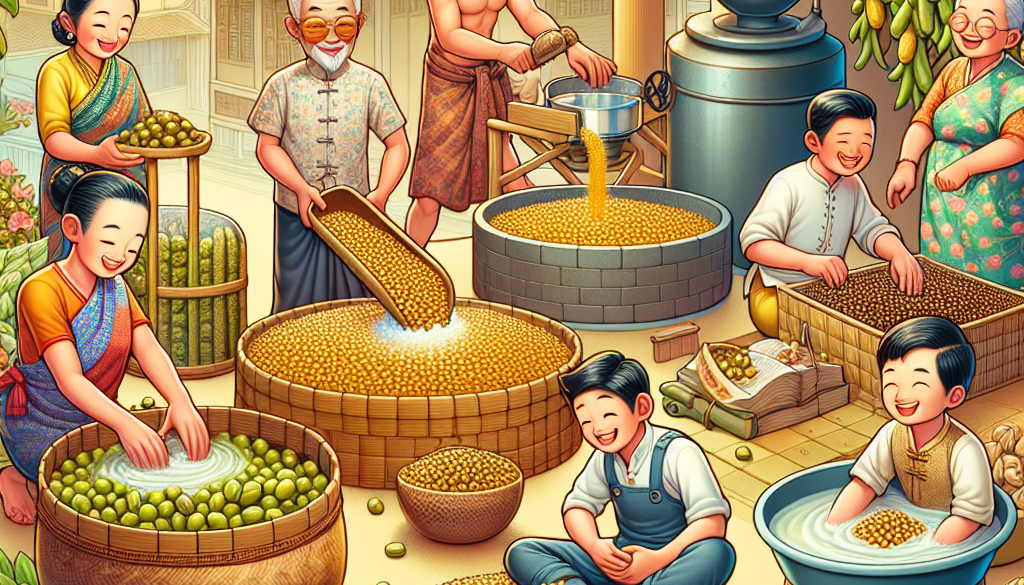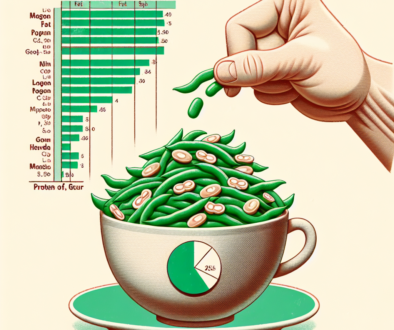Cultural Significance of Mung Beans in Asia
-
Table of Contents
- Mung Beans in Asia: Unveiling Their Cultural and Nutritional Impact
- The Historical Roots of Mung Beans in Asia
- Culinary Uses of Mung Beans Across Asia
- Regional Specialties and Recipes
- Nutritional Benefits of Mung Beans
- Traditional Medicine and Mung Beans
- Cultural Practices and Festivals Involving Mung Beans
- Case Studies: Mung Beans in Cultural Celebrations
- Modern-Day Significance and Trends
- Statistics and Market Growth
- Conclusion: The Enduring Legacy of Mung Beans in Asia
- Discover ETprotein’s High-Quality Mung Bean Protein Products
Mung Beans in Asia: Unveiling Their Cultural and Nutritional Impact

Mung beans, small green legumes, may seem inconspicuous at first glance, but they hold a place of great cultural and nutritional significance in Asia. This article delves into the multifaceted roles that mung beans play in Asian societies, exploring their historical roots, culinary uses, and the beliefs and traditions surrounding them. By examining the cultural importance of mung beans in Asia, we can gain a deeper understanding of the region’s food heritage and the ways in which this humble bean has nourished and shaped civilizations for centuries.
The Historical Roots of Mung Beans in Asia
The history of mung beans in Asia is as rich as it is ancient. Archaeological evidence suggests that mung beans were cultivated in the Indian subcontinent as far back as 4500 years ago. From there, they spread throughout Asia, becoming a staple in many cultures. The bean’s adaptability to different climates and soil types facilitated its widespread cultivation, making it a reliable food source for diverse populations.
- Domestication in India and spread to East Asia and Southeast Asia
- Historical references in ancient texts and agricultural treatises
- Role in traditional farming systems and crop rotation
Culinary Uses of Mung Beans Across Asia
Mung beans are incredibly versatile in the kitchen, used in a variety of dishes that range from savory to sweet. Their culinary applications reflect the diversity of Asian gastronomy and the creativity of its people.
- Sprouted mung beans in salads and stir-fries
- Mung bean paste as a filling for desserts and pastries
- Soups and stews featuring mung beans as a protein source
- Noodles and pancakes made from mung bean flour
Regional Specialties and Recipes
Each region in Asia has its own unique way of incorporating mung beans into its cuisine. Here are some examples:
- India’s mung dal, a staple lentil dish
- China’s green bean cake and mooncakes with mung bean filling
- Korea’s nokdujeon, savory mung bean pancakes
- Philippines’ halo-halo, a dessert with mung bean toppings
Nutritional Benefits of Mung Beans
Mung beans are not only culturally significant but also packed with nutritional benefits. They are an excellent source of protein, dietary fiber, and essential vitamins and minerals. Their health benefits have been recognized in traditional medicine and modern nutrition science alike.
- High protein content and amino acid profile
- Rich in fiber, aiding in digestion and weight management
- Low in calories and beneficial for heart health
- Antioxidant properties and their role in preventing chronic diseases
Traditional Medicine and Mung Beans
In traditional Asian medicine systems, such as Ayurveda and Traditional Chinese Medicine (TCM), mung beans are valued for their healing properties. They are believed to have cooling effects and are used to detoxify the body and alleviate heat-related ailments.
Cultural Practices and Festivals Involving Mung Beans
Mung beans are deeply woven into the fabric of Asian cultures, often playing a central role in festivals, religious ceremonies, and daily rituals.
- Use in religious offerings and rituals
- Significance in festivals such as the Chinese Dragon Boat Festival
- Symbolism of mung beans in weddings and other life events
Case Studies: Mung Beans in Cultural Celebrations
Let’s explore how mung beans are used in specific cultural celebrations:
- The role of mung beans in the Korean first birthday celebration, Doljanchi
- Mung beans as a symbol of fertility and prosperity in Indian weddings
- Preparation of mung bean dishes during the Vietnamese Tet holiday
Modern-Day Significance and Trends
In recent years, mung beans have gained popularity beyond their traditional uses, thanks to their health benefits and sustainability. They are now a part of the global health food movement, with innovations in mung bean-based products and their integration into modern diets.
- Adoption in plant-based diets and vegan cuisine
- Development of mung bean protein powders and supplements
- Use in sustainable farming and as an alternative to animal protein
Statistics and Market Growth
The demand for mung beans and their derivatives has seen significant growth in both Asian and global markets. This section will provide statistics on production, consumption, and market trends.
Conclusion: The Enduring Legacy of Mung Beans in Asia
Mung beans have been an integral part of Asian cultures for millennia, providing sustenance, health benefits, and spiritual significance. Their versatility in cuisine, coupled with their nutritional profile, has cemented their place in the dietary landscape of Asia and increasingly around the world. As we look to the future, mung beans are poised to play an even greater role in sustainable agriculture and global food security.
Discover ETprotein’s High-Quality Mung Bean Protein Products
If you’re looking to incorporate the nutritional benefits of mung beans into your diet, ETprotein offers a range of high-quality mung bean protein products. Their organic, non-GMO, allergen-free mung bean protein is perfect for those seeking plant-based protein options. Whether you’re a manufacturer, trader, or just someone interested in health and wellness, ETprotein’s products are tailored to meet your needs.
About ETprotein:
ETprotein, a reputable protein Chinese factory manufacturer and supplier, is renowned for producing, stocking, exporting, and delivering the highest quality organic bulk vegan protein and plant proteins. They include Organic rice protein, clear rice protein, pea protein, clear pea protein, pumpkin seed protein, sunflower seed protein, mung bean protein, etc. Their offerings, characterized by a neutral taste, non-GMO, allergen-free attributes, cater to a diverse range of industries. They serve nutraceutical, pharmaceutical, cosmeceutical, veterinary, as well as food and beverage finished product distributors, traders, and manufacturers across Europe, USA, Canada, Australia, Thailand, Japan, Korea, Brazil, and Chile, among others.
ETprotein specialization includes exporting and delivering tailor-made protein powder and finished nutritional supplements. Their extensive product range covers sectors like Food and Beverage, Sports Nutrition, Weight Management, Dietary Supplements, Health and Wellness Products, and Infant Formula, ensuring comprehensive solutions to meet all your protein needs.
As a trusted company by leading global food and beverage brands and Fortune 500 companies, ETprotein reinforces China’s reputation in the global arena. For more information or to sample their products, please contact them and email sales(at)ETprotein.com today.














